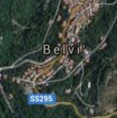
Experiments
During the ISSEP 2015 session at Belvì three different type of Archaeological Experiments and an Art Experiment were carried out with the active participation of the whole local community.
The first Archaeological Experiment, directed by Prof. Dragos Gheorghiu, was the building of a historical kiln in a dedicated locale at the Belvì Municipality Park. Here the vessels produced during the workshops with the children were fired in an oxidizing atmosphere, for a duration of around 12 hours. The kiln was then cooled down for one day before it was open and the pottery, perfectly fired without any flaw, was given to the children who manufactured it.
The second Archaeological Experiment was carried out by Giusi Gradoli and Prof. Dragos Gheorghiu and consisted in the reproduction of a prehistoric pit kiln inside which some fine-ware vessels were fired in reducing atmosphere, in order to obtain the typical ‘Bronze Age burnished grey ware’, found in the Recent and Late Bronze Age contexts of Nuragic Sardinia. Being so fine wared and displaying such a grey shiny gloss, these vessels have always been thought by local scholars to have been fired at high temperatures in updraft kilns and manufactured by skilled artisans in contact with experts from the Eastern Mediterranean from whom they may have learned their ‘know-how’. The experiment was, indeed, thought to show how an unskilled potter using a simple pit excavated in the ground, having just good knowledge of the manufacture and firing processes, could have been able to produce the fabric characteristics under examination. The firing had a duration of two hours, after which it was covered with soil for one and a half day, and left to cool slowly. The experiment succeeded in reproducing a typical grey ware Nuragic jar, a large bowl and some small vessels.
The third experiment, coordinated by Prof. Dragos Gheorghiu, was carried out by Catalin and Ileana Oancea and was aimed at reconstructing the ancient Nuragic smelting technology using the ‘lost wax method’. Several ritual figurines called ‘bronzetti’ (just because they were made of bronze), little weapons and jewelry were modelled using natural bee-wax. Encapsulated then in clay they were finally replaced by the smelted metal which, been very hot, melted the wax and filled in the voids conserving the artefact shapes.
The Artistic Experiment was carried out by Prof. Andreea Hasnas who reproduced, at human size and using only paper and cloth held by a metallic ware structure, one of the well-known Sardinian bronzetti, the Priestess. She was helped in her commitment by the local black-smith, Andrea Marotto. The statue, once finished, was offered as a gift to the local community.
